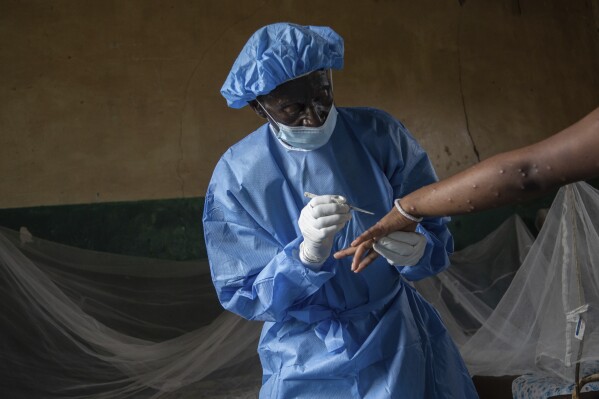Microplastics have already found their way into every environment on our planet, but contamination from this pollution is expected to get increasingly worse.
Microplastic pollution could more than double by 2040, meaning that regulations are critically needed, according to a new paper in the journal Science.
In this review of more than 20 years of microplastic research, an international group of experts stressed the need for worldwide action to combat the distribution of these minuscule plastic particles.
"Environmental contamination could double by 2040 and widespread harm has been predicted," the researchers wrote in the paper. "Twenty years after the first publication using the term microplastics, review current understanding, refine definitions, and consider future prospects."
Microplastics are tiny plastic particles, typically less than 5 millimeters in size, that originate from the breakdown of larger plastic items or are manufactured as small particles for various industrial uses. It is estimated that we release about 40 megatons of microplastics per year.
Microplastics have been discovered in various environments around the world, including ocean and river water, soils, tap water, food, animals, the air we breathe, and even inside the human body. Due to their tiny size, they are incredibly hard to remove from the environment and may accumulate up food chains.
"Everywhere we look, we have found plastics. From remote locations across the globe to the inside our own bodies, plastics have been identified," Joel Rindelaub, a senior lecturer at the University of Auckland, said in a statement. "Plastic pollution doesn't really disappear, it just breaks down into smaller and smaller pieces. While research into environmental plastic pollution is still ongoing, one thing remains clear: plastics are here and they are here to stay."
We don't fully understand the extent of the impact microplastic exposure may have on human health, but studies have already found they have damaging effects, ranging from respiratory issues and gut biota disruption to endocrine-disrupting effects and toxicity from chemicals associated with the microplastics.
"After 20 years of research there is clear evidence of harmful effects from microplastic pollution on a global scale," study co-author Richard Thompson, head of the International Marine Litter Research Unit at the University of Plymouth and a co-coordinator of the Scientists Coalition for an Effective Plastics Treaty, said in a statement.
"That includes physical harm to wildlife, harm to societies and cultures, and a growing evidence base of harm to humans. Added to that is the fact that microplastics are persistent contaminants, and once in the environment they are virtually impossible to remove.
"There are still unknowns, but during the 20 years since our first study the amount of plastic in our oceans has increased by around 50 percent, only further emphasising the pressing need for action."
In the paper, the scientists highlight the research into microplastics, their sources and their effects to date, and suggest ways to tackle this enormous source of pollution. They note that we need better sampling approaches, and need to refine how microplastics are categorized, to enable regulation to better control them.
"Plastic pollution is completely caused by human actions. That's why we need research on perceptions of risks and benefits of plastic as well as other drivers of policy support and change, integrating a social science perspective," Sabine Pahl, a professor of urban and environmental psychology at the University of Vienna and honorary professor at the University of Plymouth, said in the statement.
The experts stress that a multi-disciplinary approach to regulation through the upcoming Global Plastics Treaty is needed. The treaty is due to undergo its fifth round of deliberations in November and is a prime opportunity for collaborative international action against microplastics. The researchers note that while reducing the release of microplastics would help, a reduction in overall plastic production is needed, too, to prevent "a high risk of irreversible environmental damage."
"Mitigation strategies have not developed to a level that can adequately address environmental plastic pollution," Rindelaub said. "Thus, many researchers believe the most effective strategy to reduce plastic pollution would be to focus on preventative measures, as plastic production is currently increasing exponentially on a global level.
"Preventative strategies, like decreasing plastic production, have encountered several challenges, highlighting the importance of collaborative efforts between industries, governments, and consumers to limit plastic pollution and reduce risk to both humans and the environment."
Do you have a tip on a science story that Newsweek should be covering? Do you have a question about microplastics? Let us know via science@newsweek.com.
Thompson, R. C., Courtene-Jones, W., Boucher, J., Pahl, S., Raubenheimer, K., & Koelmans, A. A. (2024). Twenty years of microplastics pollution research—what have we learned? Science. http://dx.doi.org/10.1126/science.adl2746
Disclaimer: The copyright of this article belongs to the original author. Reposting this article is solely for the purpose of information dissemination and does not constitute any investment advice. If there is any infringement, please contact us immediately. We will make corrections or deletions as necessary. Thank you.




